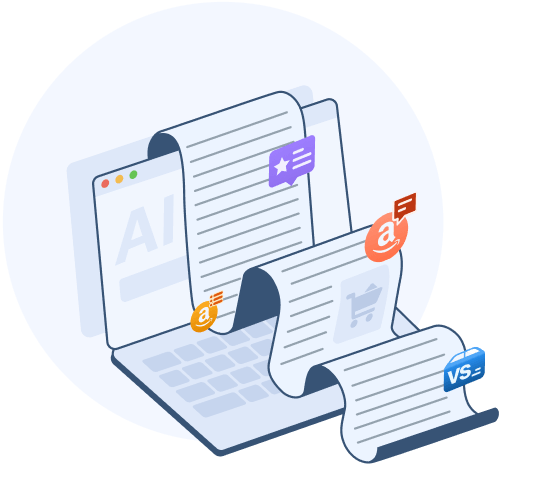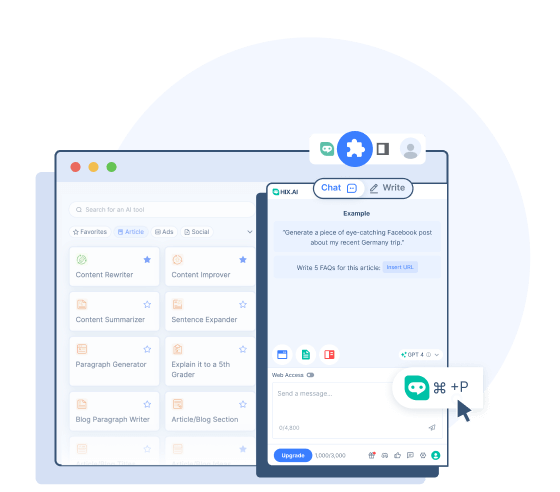As the latest development in natural language processing (NLP), GPT-4 represents a massive technological step forward. In particular, it revolutionizes AI content generation, instantly making quality content available to anyone.
Parameters are the numerical values that determine the functionality of a neural network in processing input data and generating output data. Knowing how many parameters in GPT-4 there are and what they do can be of particular interest and importance. Does that seem overwhelming?
Luckily, this article will explain everything you need to know about GPT-4 parameters and their purpose.
Meet The Future with GPT-4
Before we dive deeper into the subject, let's explore the immense capabilities of artificial intelligence through GPT-4, the latest and most advanced iteration in language understanding.
Try Out Your Prompts Right Now
Feel good about your prompts? Get your hands on the latest language model with countless parameters OpenAI has to offer. Experience the magic of GPT-4 with ease for free today!
Are GPT-3 Parameters, GPT-4 Parameters, and ChatGPT Parameters the Same?
Firstly, it’s important to clarify this important point: All GPT represents an NLP model – a framework for practical application. On the other hand, ChatGPT is a chatbot built on GPT technology, i.e., it represents the mentioned practical application. This distinction is essential moving forward to understand the GPT-4 number of parameters and their use.
Now, on to comparing ChatGPT, GPT-3, and GPT-4 parameter count.
The number of parameters in GPT grew steadily with each version of the model. The first one, aptly named GPT-1, had 117 million, while the next variant boasted 1.5 billion parameters. GPT-3, the version most ChatGPT users are most familiar with, boosted the parameter count further, bringing it up to 175 billion. The GPT-4 number of parameters might be as high as an unprecedented 100 trillion.
This gives you a simple comparison between GPT-3 and GPT-4, but what does it mean for ChatGPT as a chatbot that users can access?
The answer is simple. ChatGPT-3 (and 3.5), which you can still use for free, utilize the GPT-3 model. In other words, these versions of the chatbot have 175 billion parameters. On the other hand, the latest ChatGPT version – only available with a paid subscription – works with the number of parameters in GPT-4, i.e., an estimated 100 trillion.
It’s worth noting that the meaning and purpose of GPT parameters don’t change with the number. This leads to the next part of the story: the GPT-4 model size and its use in practice.
How Many Parameters in GPT-4 and What Do They Do?
The initial answer to how many parameters there are in ChatGPT-4 may be underwhelming. Namely, the exact ChatGPT model size isn’t currently known. Why? OpenAI, the founder and owner of ChatGPT, simply didn’t reveal that information. However, that doesn’t mean there’s no room for speculation.
The best current estimate comes from AX Semantics, placing the GPT-4's number of parameters at about 100 trillion. But what does that mean?
Essentially, the 100 trillion parameters in ChatGPT-4 allow the language model to better emulate how the human brain works, albeit still within limitations. If the stated estimate is true, this massive GPT-4 model size could help ChatGPT handle logical processes and language more akin to humans.
GPT-4 parameters differ according to their function and purpose. Regarding functionality, parameters can be set according to the hidden unit, layer, and attention head count. By their purpose, parameters are designed as model configurations, learned, positional, and hyper-parameters. Some of these inform the basics of the GPT model and the software using it, so specific parameters determine batch sizes, input, and the rate at which the model learns.
In a nutshell, GPT-4 parameters provide the framework for the model to learn and respond to queries. You can think of them as cogs in a mechanism or, better yet, lines of code in an algorithm. Each parameter determines whether a particular piece of data falls into a certain predetermined category before the data is forwarded to the next parameter. By working in accord, these parameters ensure a more accurate result and leave less space for errors.
Explaining the inner workings of GPT-4 parameters would require a deep dive into machine learning and natural language processing, which is a discussion for another time. For now, let’s settle on a simple definition:
GPT-4 parameters help the NLP model understand queries and provide more accurate responses.
But why does the GPT-4 number of parameters matter in the entire story? Read on to learn the importance of the GPT-4 model size.
Why Does the GPT-4 Parameter Count Matter?
The parameters in GPT work on a simple principle: more is better. In fact, this principle applies to many aspects of computer and data science. More processor cores and threads mean more processing power, more RAM means smoother computing, and more parameters mean a more powerful GPT model.
The reason is straightforward. The more parameters a GPT model has, the better it can learn and determine what it’s being asked to do. When you ask ChatGPT a question, you’re not acting as a programmer but (in most cases) a layperson having a conversation. However, under the surface, you’re issuing commands to a computer program.
This means the model needs to figure out what you’re telling it and which results it should produce. As you can imagine, this task can be pretty complex for a machine that, at its core, understands everything in a binary system. For that reason, parameter size matters a lot. The machine can make countless binary decisions with more parameters before producing its output.
Understanding GPT-4 Parameters
GPT technology is a fascinating development in machine learning and language processing. With the absolutely massive number of parameters in GPT-4, the possibilities are greater than ever. If the estimate of 100 trillion parameters is on point, it means GPT-4 is growing closer to the ultimate goal: understanding human language as well as humans do.



